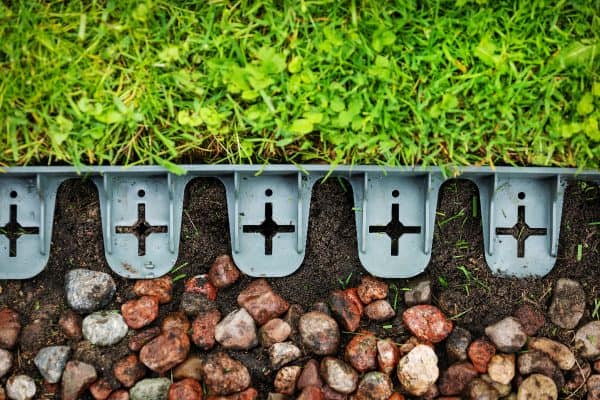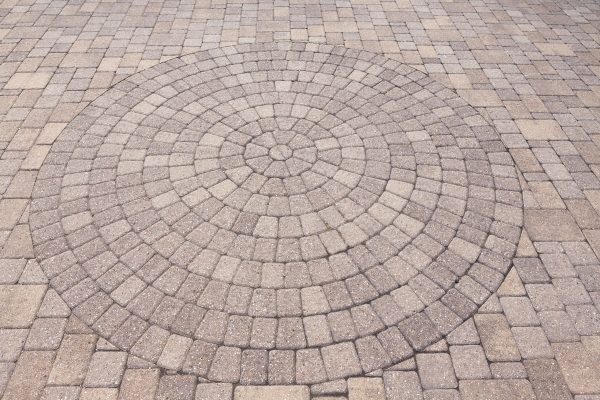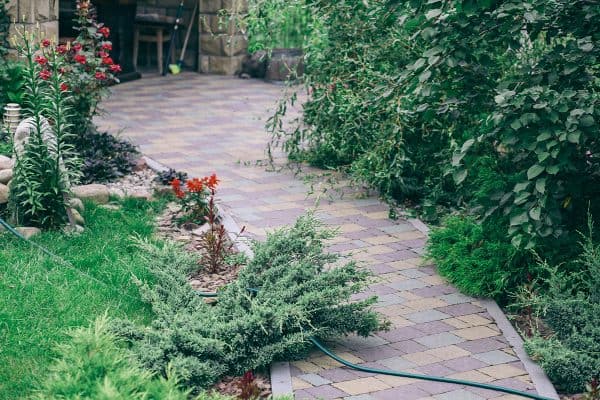Have you decided to use rubber for your edging but you need to cut it to size so it'll fit your landscaping area? If you need a guide on how to do it, you've come to the right page. We asked the experts how to go about this task and here's their recommendation.
You can cut rubber landscape edging with the use of a sharp-bladed knife or saw. The tool you will use would depend on how thick the rubber material is. Here's how to cut the rubber edging.
- Measure the length of the landscaping area.
- Transfer the measurement to the rubber landscape edging. Mark the line where you need to cut.
- Position the rubber for cutting.
- Cut the rubber edging.
Keep on reading to know more tips on how to cut and install your rubber landscape edging. We'll also tell you about this material's expected lifespan and how you can make it last longer. Let's get started!
![A landscape gardener laying turf near rubber edging border, Can You Cut Rubber Landscape Edging [And How To]?](https://landscapingbase.com/wp-content/uploads/2022/07/Can-You-Cut-Rubber-Landscape-Edging-And-How-To.png)
Can you cut rubber edging?
Landscape edging offers a lot of benefits when it comes to the aesthetics and functionality of your lawn and garden. It helps you separate and define the different areas in your yard. In doing so, you get to accentuate your favorite parts and use each area according to your desired purpose.
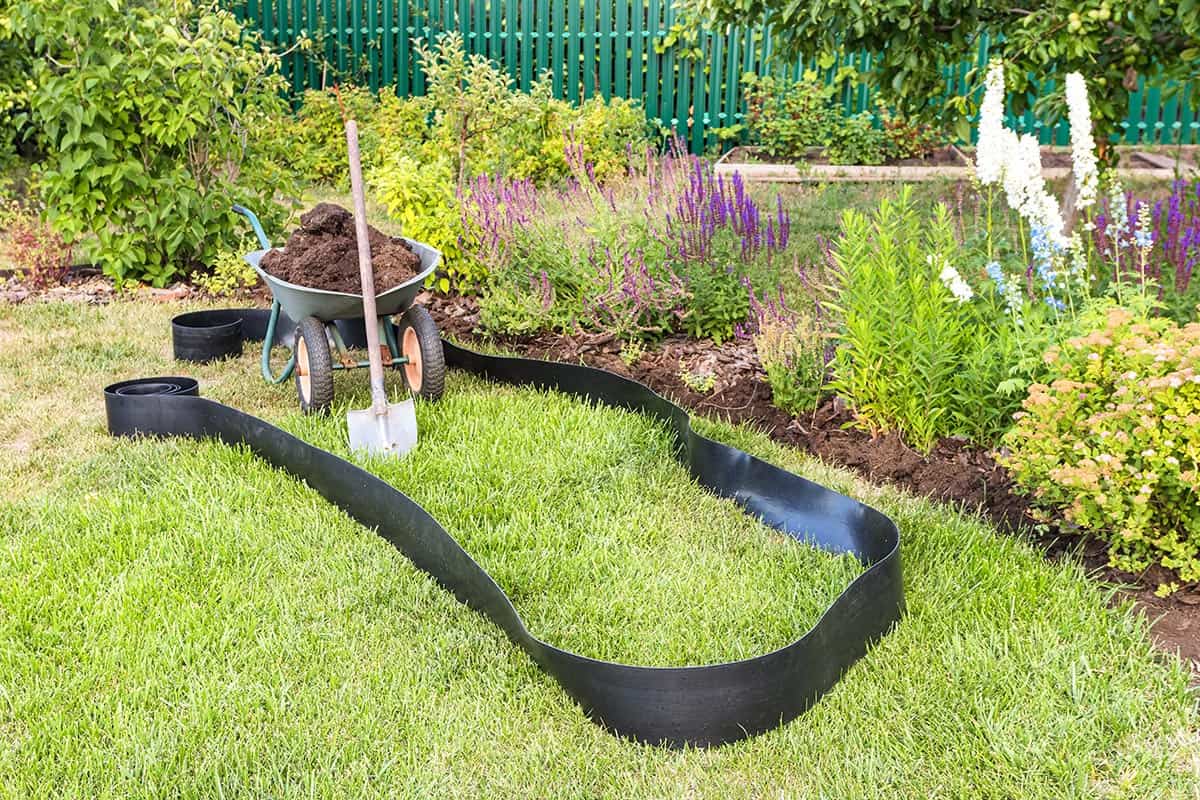
It also helps keep the mulch in place, provides a pathway for people, and tracks for mowing so that your plants won't be damaged. It makes your yard look crisp, clean, and presentable at all times.
Landscape edging can be made of different materials. If you've chosen rubber, it is a good choice. Rubber is one of the most popular choices because of its versatility.
Rubber is flexible so you can get it to conform to different shapes of edges - curved or linear. It is also more durable than plastic. This edging is also made from recycled materials so it's good for the environment.
There are different types of rubber landscape edging such as:
- rubber curb,
- crumb,
- Roman stone,
- stomp edging,
- flat roll,
- decorative edging,
- and tree ring.
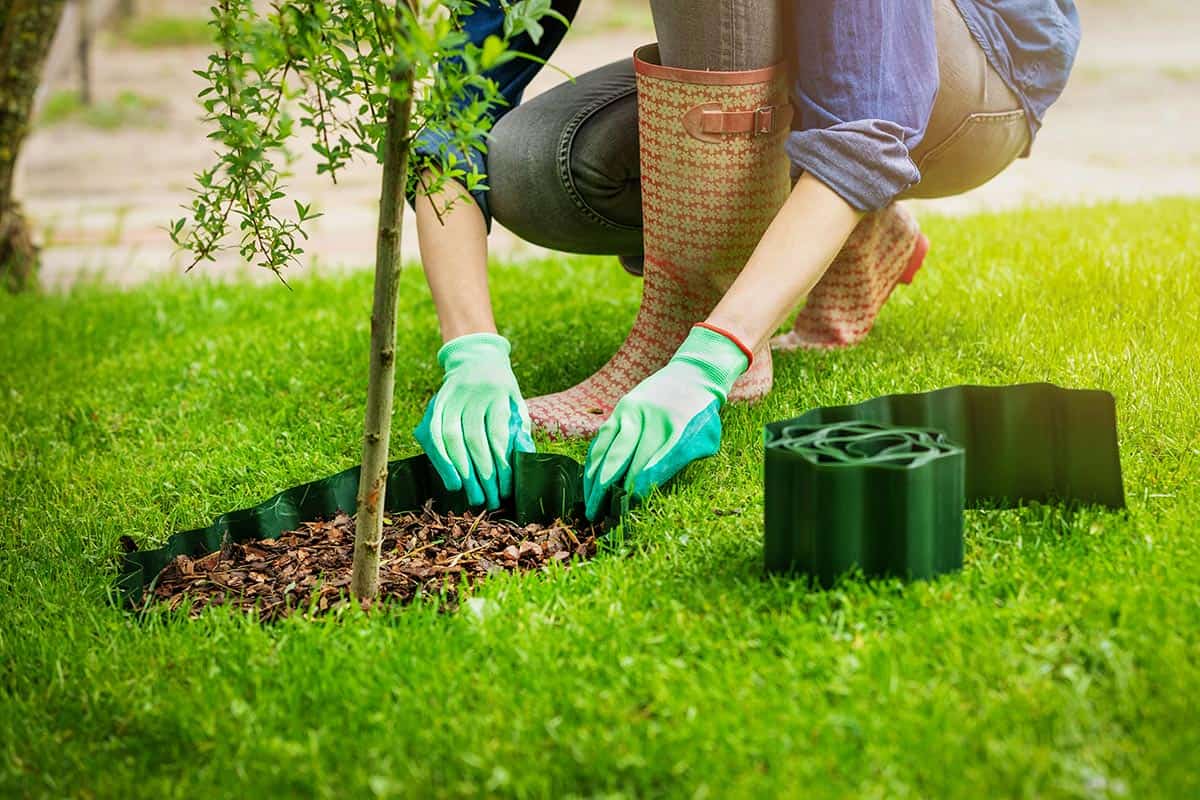
It comes in different designs, shapes, sizes, and colors to suit your preference for your landscaping needs. It can be flat or raised. You can choose from rubber bark, strips, bricks, and even some that look like stones to complement the overall look of your outdoor area.
Check out this rubber landscape edging on Amazon.
And since they come in different sizes, the ones you buy in the market may or may not be of the right size for your garden. If it so happens that you need to cut a portion for the rubber edging to fit your lawn perfectly, don't worry because you can have it cut according to the size that you need.
Experts recommend using slitter knives on rubber material. You can also use a jigsaw, hacksaw, or any sharp-toothed blade that can cut through the rubber. It would depend on how thick the rubber is.
Rubber tends to snag and close if the blade you're using isn't sharp enough so your attempts would be futile if you're not using the right tools.
Here's how to cut rubber landscape edging.
Tools and Materials Needed
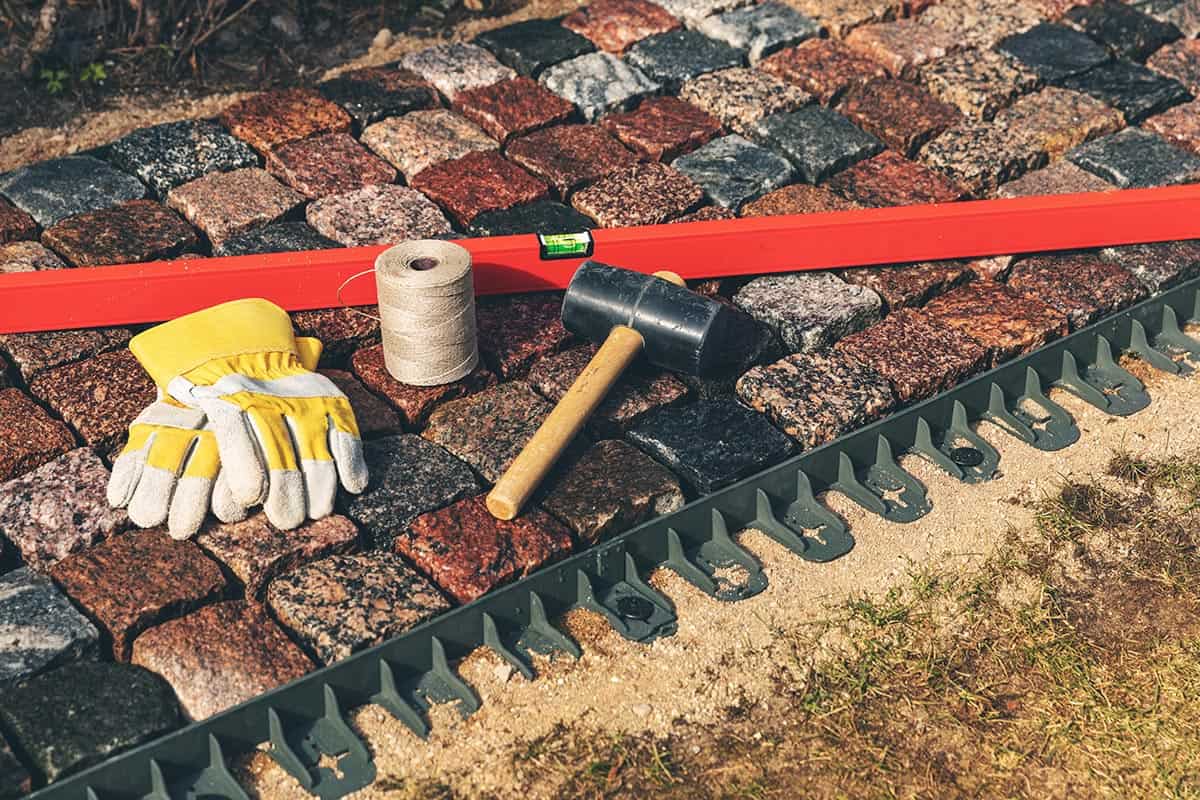
- tape measure
- string or long water hose
- marking pencil
- working table
- jigsaw, hacksaw, slitter knife, or any sharp-bladed knife or saw
- gloves and safety goggles
- wood or miter box (optional)
- ruler (optional)
Procedure
- Lay the string or garden hose on the outlines of the area where you will put the rubber landscape edging.
- Measure the string or garden hose to get the right length of landscape edging that you will be needing.
- Measure the rubber landscape edging that you have and mark the location where you need to cut.
- Put the rubber on your working table. Position it so that the line that you need to cut is at the edge of the table. You can also put a wood or miter box to elevate the rubber and serve as your guide as you do the cutting.
- Put on your gloves and goggles for safety purposes.
- Proceed to cut the rubber edging. If the rubber is thick, you might need to make several scores along the marked line to make it easier to cut through the material. Use a ruler to guide you.
Click this link to find this hacksaw on Amazon.
That's it! Once you have your rubber landscape edging cut according to the size that you need and your ground has been prepared for the installation, you can position the edging on your lawn. Use your mallet or hammer to secure the spikes in their proper places so that the edging will stay in place.
How do you install rubber garden edging?
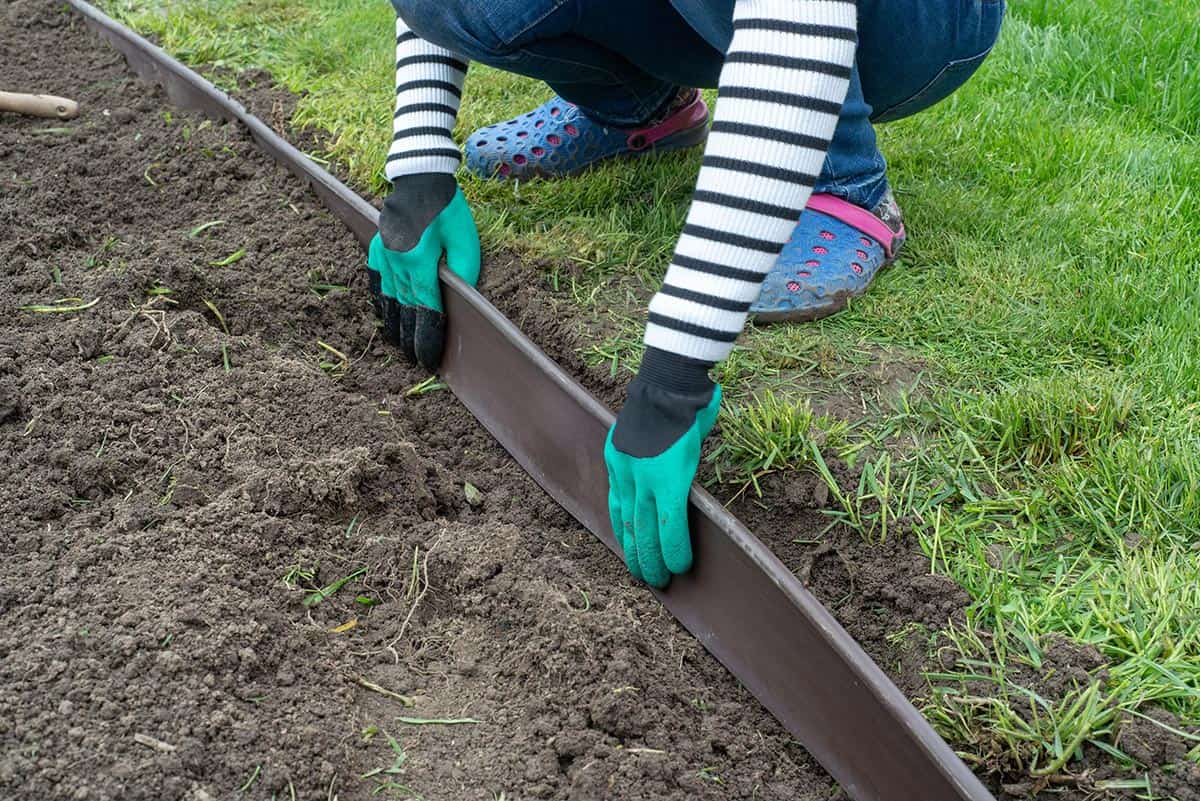
When you already have your rubber landscape edging in the right size, you can install it on your lawn to separate it from your flowerbeds or garden.
We've discussed this briefly above but here's a step-by-step guide on how to do it.
Tools and Materials
- heavy-duty shovel
- rubber landscape edging
- spikes
- mallet or hammer
- garden hose
Procedure
- Prepare the ground by loosening the soil to make sure that it is soft enough for digging and staking. You can water the soil to speed up the process.
- Use the garden hose to form an outline that you need to follow for this landscaping task.
- Create a shallow trench for the landscape edging. Use your shovel for digging a few inches of soil off the ground.
- Set aside the dirt as you might need it later on for filling the gaps and leveling the ground.
- Place the rubber landscape edging along the trench.
- Secure the edging in place with the help of the spikes that it comes with. Use your mallet or hammer for this but be careful so you won't hurt yourself.
- Use the dirt that you've set aside to fill any gaps in the garden or lawn side of the landscape edging.
That's it! Easy peasy, right? Landscape edging is a fun DIY job that you can do to improve the look and functionality of your lawn and garden.
How long does rubber landscape edging last?

When properly installed and maintained, rubber landscape edging can last for around 20 years. This is good value for your money considering that it is one of the most inexpensive edging materials.
Rubber can resist water and is resilient to cuts and chips. However, exposure to UV rays and intense heat can make it brittle.
Good thing, part of the edging is submerged in the ground while the rest is covered by grass, mulch, stones, or other landscaping materials. Sun exposure is minimal so it won't be worn out easily.
Here are more tips on how to make your rubber landscape edging last longer:
- While digging the trench for your landscape edging, aim for an acute angle from the ground and don't dig straight down. This will help ease the soil pressure on the landscape edging.
- Cut the grass that grows around the landscape edge. If grass finds its way underneath the edging, it would be displaced or raised from its initial position. The edging would become loose and would no longer be effective in serving its purpose.
- As much as possible, use a grass cutter instead of a lawnmower when cutting the grass near the landscape edging. You have more control over it so you can avoid damaging the rubber edging.
- Make sure the spikes or stakes are fastened securely on the ground. These are their anchors and give solid support from the pressure that they receive.
By following these tips, you're making it easier for your landscape edging to do its job and lessen the wear and tear on its surface.
Final Thoughts
Yes, you can cut rubber landscape edging so go ahead and choose from the many rubber options that'll suit your landscaping needs. Once you cut it according to the size that you need, it's easy to install and you'll have a reliable material to help keep your lawn and garden beautiful and functional.
For more landscaping ideas, you can read the following posts:



